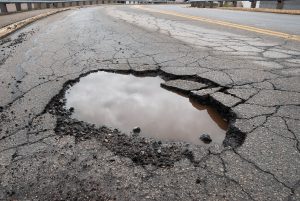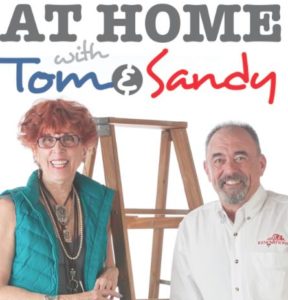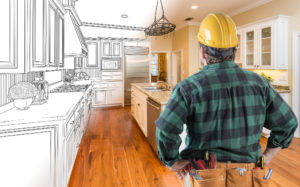Over time, all road surfaces made from asphalt need to be maintained. Use and weather cause the surface to wear and crack.
Sandy: Yikes Tom, potholes, potholes and more potholes. This wet, longish winter is wreaking havoc on our roads.
Tom: Sure is! Swerving to avoid them could make it look like you are a suspect for a DUI.
Sandy: Tom, I would like to invite Wyatt Orr, president of Earth Resources Corporation, to join us and provide some feedback from the guy who knows about this sort of thing – roads.
Sandy: Welcome, Wyatt. I am thrilled you can join us.
Wyatt: Glad to be here.
Tom: Wyatt, not only is it great to have you join Sandy and me, I also want to let our readers know that you are a YCCA Board member, and we are grateful for your expertise.
Sandy: We are talking about potholes, well actually everybody is talking about potholes, which seemed to appear overnight. Wyatt, what causes a pothole?
Wyatt: Potholes are a result of the subgrade under the asphalt failing, which means water got under the asphalt.
Tom: So, once the subgrade gets wet, does that impact the structural capability to support the asphalt?
Wyatt: Exactly. The wet subgrade is a base for the asphalt. When it becomes pliable from water, it no longer works.
Sandy: A squishy subbase causes the asphalt to fail?
Wyatt: Actually, the vehicles driving over the asphalt, i.e., the weight of the vehicle on the asphalt, moves the dirt subbase and displaces it.
Tom: Which, in turn, causes the asphalt to crack further, letting more water in, exacerbating the whole destruction process.
Sandy: Some potholes look as though the asphalt is gone. Does it crumble up and disappear below the surface?
Wyatt: It can, but more likely the vehicles driving over the cracked asphalt have caused the asphalt to be displaced along the road, leaving a pothole.
Sandy: So, cars and trucks make potholes.
Wyatt: Essentially, yes. If nobody drove over the area affected by water under the surface, I suppose it could dry out and not grow up to be a full-fledged pothole.
Tom: It seems road maintenance is key in preventing the water from getting under the asphalt in the first place.
Wyatt: Yes, it is.
Sandy: There are several different methods of maintaining the roads. Wyatt, could you run us through some of them?
Wyatt: Sure. There are three basic approaches to maintaining roads. They all address a different way to seal the surface of the asphalt, preventing water from getting below.
Tom: Over time, all road surfaces made from asphalt need to be maintained. Use and weather cause the surface to wear and crack.
Sandy: I suppose how a road deteriorates will determine what method to implement in maintaining it.
Wyatt: Exactly. The first step is crack seal. You have seen this being done; I am sure. A traffic lane is closed off as one team is out in front using compressed air to clean the cracks in the asphalt. This will allow the secondary team’s sealant to adhere better to the asphalt and protect the asphalt longer.
Sandy: Wyatt, sometimes I see crack seal being applied in warmer weather.
Wyatt: Well, yes, but crack fill is best done in cooler temperatures when the asphalt has contracted. The next step would be a seal treatment of some type. There are several to choose from.
Tom: Is this method chosen when the cracks are too numerous to seal individually?
Wyatt: Actually, the crack fill is done first and then some coating can be applied. When an asphalt surface has experienced a significant amount of wear but is not to the point of remove and replace, a chip seal coat or wear layer can be applied.
Sandy: That extends the life of a road quite a bit, I imagine.
Tom: It must be difficult for the governing districts to keep up with road maintenance. It must be costly and labor intensive.
Sandy: I am sure you are right, Tom. I do, however, think that they all do a fairly good job staying on top of things.
Wyatt: They do, but with the freeze and thaw of a winter, the damage can be extensive and spread out all over a road system.
Sandy: OK good, we are back to potholes! Wyatt, why do some fixes stay and some do not?
Wyatt: A lot of the repairs that do not seem to work are really intended to be temporary fixes.
Tom: Like filling a pothole that is dangerous?
Sandy: The kind that causes you to need a realignment on your vehicle or can swallow your smart car.
Wyatt: LOL, yes. If the pothole poses a danger, road crews will fill the hole with what we call a cold mix, asphalt that is in a bag, making the road a little safer until the real repair can be done.
Tom: The real repair can be put off for weather reasons, such as too cold or too wet, and scheduling.
Wyatt: Exactly. Road crews can be stretched thin during this time of year. And weather plays a huge factor in when a repair can happen.
Sandy: So, Wyatt, what is entailed with a “real repair?”
Wyatt: Typically, the existing surface that is damaged, including the surface surrounding the pothole, not just the pothole itself, and the area is saw cut with the asphalt removed. The subbase we talked about earlier is removed to solid ground. New base material is then put back and compacted to create a dense and solid substrate. Hot asphalt is then put on the base and compacted in place.
Tom: What is done to protect the joint where the new asphalt meets the old?
Wyatt: A product we call Tak oil is spread all over the cut on the existing asphalt and that seals the joint quite well.
Sandy: It is quite the process to repair a pothole properly. It makes sense to me. Wyatt, thank you for joining us this month. You are a wealth of information for our readers.
Wyatt: After one of the wettest winters that the northern part of Ariona has seen for many years, I do want to give hats off to ADOT and their teams for making initial pothole patching repairs on State Route 69 so quickly.
Sandy: I guess we could blame this on the Groundhog for the six additional weeks of winter. Those potholes sure did pop up quickly after moisture seeped into and below the pavement.
Wyatt: Potholes are acute in our area. With the higher elevations, our pavement is subjected to more freeze-thaw cycles than so many other areas.
Sandy: I say patience, as our jurisdictions and ADOT are addressing the aftermath to our road system as quickly as they can.
Thanks for stopping in and reading “At Home with Tom and Sandy.” You are in good company, and we love sharing educational, fun and important information with you. QCBN
Sandy Griffis, Executive Director, Yavapai County Contractors Association, 928-778-0040.
Vinny Gallegos, CYMPO, 928-442-5730.
Tom Reilly, Architect, Renovations, 928-445-8506 renovationsaz.com
Remember to tune in to YCCA’s Hammer Time every Saturday and Sunday morning 7 a.m. on KQNA 1130 AM/99.9 FM/95.5FM or the web kqna.com. Listen to Sandy and Mike talk about the construction industry and meet your local community partners. Hammer Time is a great way to start your weekend.












